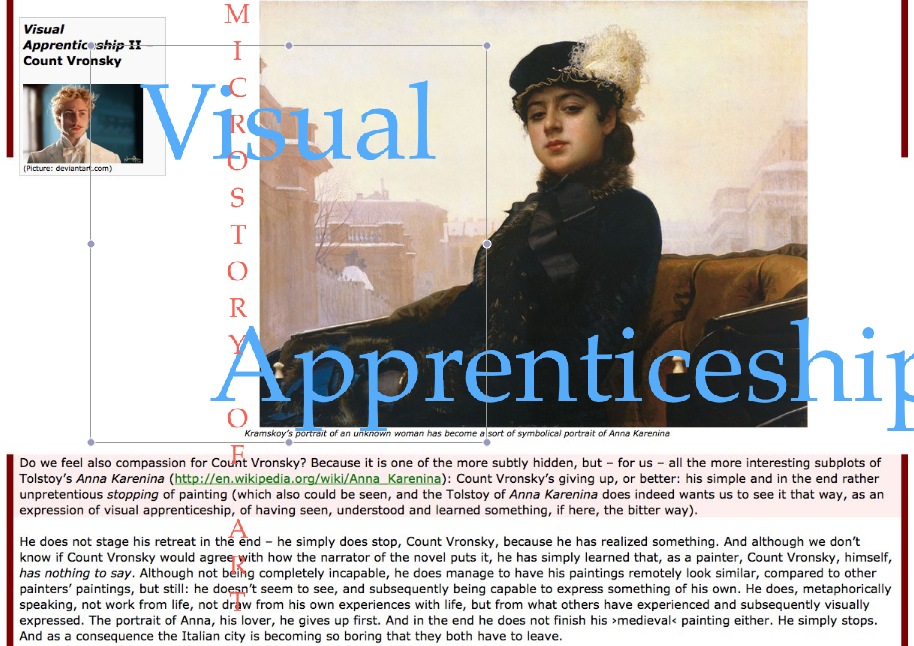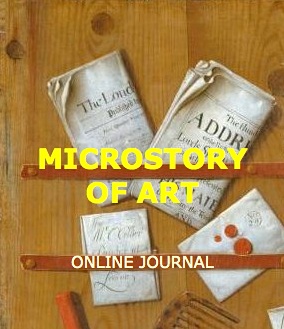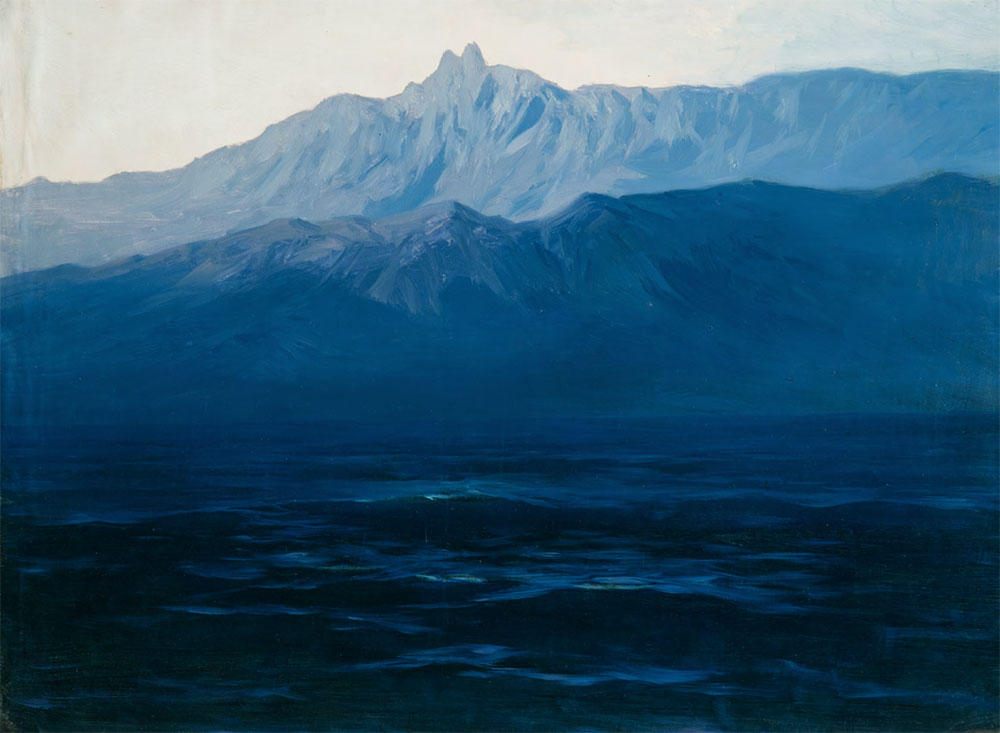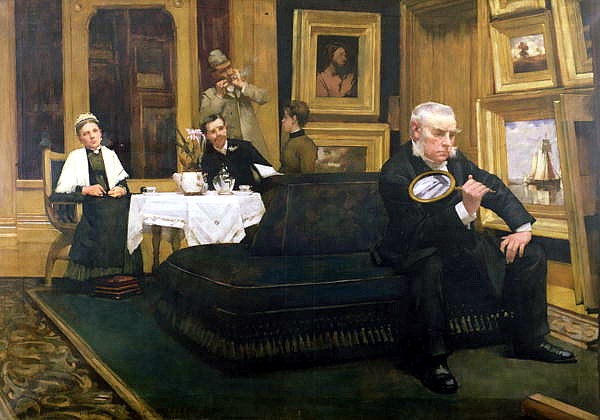M
I
C
R
O
S
T
O
R
Y
O
F
A
R
T
........................................................

NOW COMPLETED:

........................................................
MICROSTORY OF ART
ONLINE JOURNAL FOR ART, CONNOISSEURSHIP
AND CULTURAL JOURNALISM
........................................................
INDEX | PINBOARD | MICROSTORIES |
FEATURES | SPECIAL EDITIONS |
HISTORY AND THEORY OF ATTRIBUTION |
ETHNOGRAPHY OF CONNOISSEURSHIP |
SEARCH

........................................................



 >MICROSTORIES
>MICROSTORIES
- Richard Serra
- Martin Scorsese
- Claude Simon
- Sunshine
- Werner Herzog
- The Creation
- Marcel Duchamp
- Nino Rota
- Wölfflin and Woolf
- Hansjörg Schneider
- Kraftort Arkadien
- Visual Biography
- Schlaraffenleben
- Die Geisteswissenschaften
- The Voyeur
- Buzzword Sustainability
- Paul Verlaine
- Tao Yuanming
- New Beginning
- Seneca
- Still Lifes
- Charles Baudelaire
- Frédéric Chopin
- The Art History of Sustainability
- Wang Wei
- Solarpunk
- Historians of Light
- Lepanto
- Renaturalization
- Plates
- Snow in Provence
- Learning to See
- Picasso Dictionaries
- Peach Blossom Spring
- Picasso Tourism
- Tipping Points
- Sviatoslav Richter
- Weather Reports
- Treasure Hunt
- Another Snowscape in Picasso
- Picasso in 2023
- Dragon Veins
- The Gloomy Day
- The Art of the Pentimento
- Reforestation
- The Status of Painting
- Emergency Supply
- Punctuality
- Watching Traffic
- Zhong Kui
- How Painting Survived the 1990s
- Confirmation Bias
- Sustainability and Luxury
- Garage Bands
- Picasso and Artificial Intelligence
- Eyes of Tomorrow
- Picasso in 2023 2
- Gluing Oneself to Something
- Suburbia
- Bamboo
- Sustainability and Carpe Diem 1
- Interviews with Bruegel
- Sustainability and Carpe Diem 2
- Coffee & Sugar
- Bamboo 2
- Picasso in 2023 3
- Sustainability and Carpe Diem 3
- Cherry Orchard
- Old Magazines
- Chance
- Nick Drake
- Harlequin
- The Smartphone & the Art Book
- Atlas Syndrome
- The Kitchen
- Atlas Syndrome 2
- Consideration
- Tori Amos
- School
- Orchard Auctioning Day
- The Hundred Years’ War
- Sócrates
- Chameleon
- Nefertiti Bust
- Picasso as a Computer
- Sunflowers
- Philemon & Baucis
- Ode to the Radio
- Childhood
- Wimmelbild
- Restitution
- Nick Drake 2
- Wishful Thinking
- Sundays
- The Independent Scholar
- September
- The Fisherman by Pirosmani
- Microadventure
- Sociology
- Salvator Mundi
- Chillon
- Appassionata
- Amber
- Homer
- Berlin
- Planet Walk
- Improvisation
- Seeing Picasso
- These Nice Kids
- Robber
- The One
- The Sea Turtle
- Zoo
- Through the Hush
- Wunderkammer
- I Do Not Seek, I Find
- Shopping Mall
- Food Hamper
- The Secretary
- This Gate
- Nor Rainy Day
- House on a Hill
- Beautiful Island
- Second-hand Bookstore
- Flat
- Slap in the Face
- Serra, Wenkenpark
- Apologies
- The Bells
- Nordmann Fir
- Picasso Wanting To Be Poor
- Picasso, Pirosmani
- A Brief History of Sculpture
- 24 Sunsets
- Rusty Phoenix
- Glove
- Wintry Stanza
- A Song
- Like A Beatle
- Catching An Orange
- Solar Bees
- Permaculture

 >FEATURES
>FEATURES
- Van Gogh On Connoisseurship
- Two Museum’s Men
- Ende Pintrix and the City in Flames
- Titian, Leonardo and the Blue Hour
- The Man with the Golden Helmet: a documentation
- Un Jury d’admission à l’expertise
- Learning to See in Hitler’s Munich
- Leonardo da Vinci and Switzerland
- The Blue Hour Continued
- The Blue Hour in Louis Malle
- Kafka in the Blue Hour
- Blue Matisse
- Blue Hours of Hamburg and LA
- A Brief History of the Cranberry
- The Other Liberale in the House
- The Blue Hour in Raphael
- Who Did Invent the Blue Hour?
- Monet on Sustainability
- Velázquez and Sustainability
- The Blue Hour in Guillaume Apollinaire
- Van Gogh on Sustainability
- The Blue Hour in Marcel Proust
- Picasso and Sustainability
- The Contemporary Blue Hour
- The Blue Hour in 1492
- The Blue Hour in Hopper and Rothko
- Hopper and Sustainability
- The Blue Hour in Ecotopia
- The Hour Blue in Joan Mitchell
- Explaining the Twilight
- The Twilight of Thaw
- The Blue Hour in Pierre Bonnard
- Explaining the Twilight 2
- Picasso on Stalin
- Rubens on Sustainability
- The Salvator Mundi in Bruegel and Rubens
- The Blue Hour in Leonardo da Vinci and Poussin
- The Blue Hour in Rimbaud
- Faking the Dawn
- Frost and Thaw in Ilya Ehrenburg
- Picasso, Stalin, Beria
- Picasso, Solzhenitsyn and the Gulag
- Shostakovich on Picasso
- Hélène Parmelin in 1956
- Historians of Picasso Blue
- Picasso Travelling to Moscow 1
- The Blue Hour in Caravaggio
- Picasso Travelling to Moscow 2
- Picasso, the Knife Game and the Unsettling in Art
- Some Notes on Leonardo da Vinci and Slavery
- Picasso Moving to the Swiss Goldcoast
- The Blue Hour in Camus
- The Blue Hour in Symbolism and Surrealism
- Caspar David Friedrich in His Element
- Exhibiting the Northern Light
- Caspar David Friedrich in His Element 2
- Robert Schumann and the History of the Nocturne
- The Blue Hour in Robert Schumann
- Caspar David Friedrich and Sustainability
- The Twilight of Thaw 2
- Multicultural Twilight
- The Blue Hour in Anton Chekhov
- The Blue Hour in Medieval Art
- Twilight Photography
- The Blue Hour in Bob Dylan
- Iconography of Optimism

 >SPECIAL EDITIONS
>SPECIAL EDITIONS
- Visions of Cosmopolis
- Mona Lisa Landscapes
- Turner and Ruskin at Rheinfelden
- Painters On TV & On TV
- Spazzacamini in Art
- A Last Glance at Le Jardin de Daubigny
- The Experimental Cicerone
- A Dictionary of Imaginary Art Historical Works
- Iconography of Blogging
- Begegnung auf dem Münsterplatz
- Cecom
- Das Projekt Visual Apprenticeship
- Those Who See More
- A Fox on Seeing with the Heart
- Sammlung Werner Weisbach
- Daubigny Revisited
- Some Salvator Mundi Microstories
- Some Salvator Mundi Afterthougths
- Some Salvator Mundi Variations
- Some Salvator Mundi Revisions
- A Salvator Mundi Questionnaire
- A Salvator Mundi Puzzle
- Unknown Melzi
- Francis I and the Crown of Charlemagne
- From Amboise to Fontainebleau
- Drones Above Chambord
- Looking Back At Conques
- Flaubert At Fontainebleau
- Images of Imperial Ideology
- The Chronicles of Santa Maria delle Grazie
- Seeing Right Through Someone
- Melzi the Secretary
- Eying Glass
- A Foil to the Mona Lisa
- A Renaissance of the Cartoon
- Sketching a Family Tree
- Venetian Variations
- A Brief History of Digital Restoring
- A Consortium of Painters
- Leonardeschi and Landscape
- A Christ in Profile
- Learning to See in Spanish Milan
- A History of Gestures
- Leonardo and Josquin
- A Renaissance of the Hybrid
- Suida and Heydenreich
- The Watershed
- Three Veils
- From Beginning to End
- Connoisseurship of AI
- Twilight and Enlightenment
- The Blue Hour in Chinese Painting
- Dusk and Dawn at La Californie
- Iconography of Sustainability
- The Blue Hour in Goethe and Stendhal
- The Sky in Verlaine
- The Blue Hour in Paul Klee
- Iconography of Sustainability 2
- The Blue Hour in Charles Baudelaire
- From Bruegel to Solarpunk
- Some Salvator Mundi Documentaries
- Some More Salvator Mundi Monkey Business
- The Windsor Sleeve
- Brigitte Bardot’s Encounter with Picasso
- Art Historians and Historians
- A Salvator Mundi Chronicle
- The Salvator Mundi and the French Revolution
- The Fontainebleau Group
- The Encounter of Harry Truman with Pablo Picasso
- The Fontainebleau Group Continued
- The Windsor Sleeve Continued
- The Salvator Mundi in Early Netherlandish Painting 1
- Some Salvator Mundi Resources
- A New Salvator Mundi Questionnaire
- The Woman in Picasso
- The Yarborough Group
- Melzi, Figino and the Mona Lisa
- The Yarborough Group Continued
- A Salvator Mundi Global History
- The Salvator Mundi in Medieval Art
- The Salvator Mundi in Medieval Art 2
- The Salvator Mundi in Early Netherlandish Painting 2


 >HISTORY AND THEORY OF ATTRIBUTION
>HISTORY AND THEORY OF ATTRIBUTION
- The Mysterious »Donna Laura Minghetti-Leonardo«
- Assorted Demons of Connoisseurship
- Panofsky Meets Morelli
- Discovering the Eye of Sherlock Holmes
- Handling the Left-handed Hatchings Argument
- Visual History of Connoisseurship
- Alexander Perrig
- Connoisseurship in 2666
- What Postmodernity Has Done to Connoisseurship
- Dividing Four Fab Hands
- A Leonardesque Ambassador
- Test Cases in Connoisseurship
- A Raphael Expertise
- How to Tell Titian from Giorgione
- Louise Richter
- The Unique Property in the History of Connoisseurship
- An Expertise by Berenson
- The Book of Expertises
- An Album of Expertises
- An Expertise by Friedländer
- A Salvator Mundi Provenance
- How to Tell Leonardo from Luini
- An Expertise by Crowe and Cavalcaselle
- An Expertise by Bayersdorfer
- An Expertise by Hermann Voss
- An Expertise by Hofstede de Groot
- Leonardeschi Gold Rush
- An Unknown »Vermeer«
- An Expertise by Roberto Longhi
- An Expertise by Federico Zeri
- A Salvator Mundi Geography
- A Salvator Mundi Atlas
- The Bias of Superficiality
- 32 Ways of Looking at a Puzzle
- James Cahill versus Zhang Daqian
- Five Fallacies in Attribution
- On Why Art History Cannot Be Outsourced to Art Dealers
- On Why Artificial Intelligence Has No Place in Connoisseurship
- Salvator Mundi Scholarship in 2016
- Leonardo da Vinci at the Courts
- The Story of the Lost Axe
- The Last Bruegel
- A Titian Questionnaire
- On Where and Why the Salvator Mundi Authentication Did Fail
- The Problem of Deattribution

 >ETHNOGRAPHY OF CONNOISSEURSHIP
>ETHNOGRAPHY OF CONNOISSEURSHIP
MICROSTORY OF ART
ONLINE JOURNAL FOR ART, CONNOISSEURSHIP
AND CULTURAL JOURNALISM
........................................................

***
ARCHIVE AND FURTHER PROJECTS

1) PRINT


***
2) E-PRODUCTIONS


........................................................

........................................................

........................................................
FORTHCOMING:


***
3) VARIA

........................................................

........................................................

........................................................

........................................................

........................................................
***
THE GIOVANNI MORELLI MONOGRAPH

- The Giovanni Morelli Monograph
........................................................
MICROSTORY OF ART
ONLINE JOURNAL FOR ART, CONNOISSEURSHIP AND CULTURAL JOURNALISM
HOME
Caspar David Friedrich in His Element 2 (Friedrich on Interpretation)

(Picture: DS)
(29.4.2023) I had not come to Berlin to see paintings by Caspar David Friedrich. The above view – an intense Berlin twilight hour – was that from my hotel room in September of 2011, just after arriving, when I had come to Berlin to do archival studies in relation with my biography of Jean Paul Richter. It was immediately after my 40th birthday, and needless to say that I was often in a pensive mood. Later that month I had the chance to visit also the Alte Nationalgalerie with the Caspar David Friedrich paintings. I also did take pictures there, but what I remember most vividly was that a visitor was being photographed by another person, and in front of the Mönch am Meer by Friedrich, with the person being photographed doing the victory-sign. I did not catch that in a photograph. But reviewing all the pictures of that trip, I am reliving intensely what I had been doing and seen, and musing about that trip, it seems to me that it would be easy to create a narrative of that trip that would turn the whole journey into a trip to see Caspar David Friedrich, and to experience Berlin with Caspar David Friedrich, or in dialogue with Caspar David Friedrich.
1) Against Interpretation
In September 2011 I was a restless observer. I had been confronted with illness and death earlier that year, and then again with illness, and probably, and especially after my 40th birthday, I felt more vulnerable than usually, or before all that, and on the other hand I was eager to see and to experience as much as I could. In Berlin.
All in all I brought back 1123 photographs of that trip, that actually had been dedicated to doing some archival research. Picture number 5 was the above shown evening mood. Could it pass for a dawning? I don’t think so. This was an intense evening mood, the kind of material Caspar David Friedrich worked with, not by just representing such moods (dawn as well as dusk), but by transforming them into images that reflect the elementary things in life. In pictures that, perhaps, leave out the trivial, banal, the distracting, the ordinary and the ugly. But not the grave, the sublime, the mighty, the grand, the beautiful, and not mortality and passing time, and not human figures seemingly reflecting on all that, or contemplating whatever they are contemplating. Picture number 1123 which I brought back from my trip to Berlin was to be the photographic representation of a Caspar David Friedrich picture in the Nationalgalerie. The picture shown below. A Man and a woman contemplating the moon.
I was eager for distraction from my moods, and such strategy does work, in Berlin, and does not work, not even in Berlin. I remember lows, but even after 12 years, I am still full of all the impressions I gathered, with a feel that I have not digested everything, or even parts of it. In other words: I am still drawing on that experience (which also makes me someone who prefers staying at home, happy to have travelled, but not eager to embark on new trips all of the time).
If one is eager to see every painting in Berlin, or if one is eager to gather a maximum of impressions, in a city with past being extremely present, and with the media sphere being very present, even in the streets, one is not necessarily eager to make something of all these impressions on the spot. Perhaps the attitude is rather: against interpretation, because interpretation would slow the process (of eating the visual impressions) down. One is a devourer of what can be seen. And certainly I did not know then, that Caspar David Friedrich scholarship is controversial, and if I had known, I would not have cared. This I would have classified among the trivial, the banal, the irrelevant. Coming to terms with what I had experienced in my personal life was more important. And getting oneself distracted seemed to be one way. This worked for some time, but not after coming home. But the good thing is: one can do something, with all the material amassed. Perhaps only later, after having to overcome crises by other means, but then, there is a lot to think about, and for quite some time.


(Picture: DS)

2) Friedrich and Interpretation
Does it matter if Caspar David Friedrich intended to represent dusk or dawn in a painting? Or if he represented the moment before sunset, or after sunset?
There are scholars who say that Friedrich loved ambiguity. Which means that he may have, according to these scholars, intended ambiguity. Which may be right for one example, but not necessarily for another. Other scholars seem to hold a different view: the doyen of Friedrich scholarship for example, Helmut Börsch-Supan, argued against the tradition to see a dawning in the Frau vor untergehender Sonne (on the right). But in recent years corrected also himself: by stating that the above shown Grosses Gehege (which is not a painting that can be seen in Berlin) does not intend to show the moment after, but before sunset.
To me it seems that the subject matter in Friedrich paintings, in a way, relativizes the pettifogging discourse of scholars fighting (but actually, by fighting, demanding respect, recognition, and status, because status cannot be attained without recognition). This is all very banal, but a fact of scholars’ life, and even if the subject matter is, in some sense, demanding a stance ›above such trivialities‹, one has to deal also with the realities of scholars’ lives, as banal as this may seem. If one is not part of the community of Friedrich scholarship, the easy solution might be just to look at what various positions may imply, and how convincing and fruitful such positions may be (regarding one’s questions and needs), while ignoring the pettifogging fight for recognition and social position. As a Friedrich scholar (which I am not) one could switch between joining and not joining the argument, but Friedrich also seems to allow to relax, since Friedrich can be quoted for a very relaxed stance: a beholder might not have the same thoughts and feelings as the artist had, but if a beholder is stimulated to have his own thoughts and feelings, this is a noble thing, and perhaps the most noble thing. Which might inspire to make a simply and rather basic difference: it is one thing to know about, or to speculate about what Friedrich may have had in mind himself with a painting; and it is another one to develop a view of one’s own regarding the same painting and regarding what Friedrich may have had in mind. But it seems to make sense to me, not to cut the one from the other. I like to be informed of what we know about Friedrich. But on the other hand a painting is not the equivalent to a test. If I know what Friedrich may have had in mind, I’d like to develop my own view on that. Which may include that I am not perceiving the things Friedrich represented, in the same way he did, even if I know (which is rarely the case) how he did perceive a sunset or a sunrising, with some human figures contemplating it. I am free, knowing what the artist intented, to go my own way as an interpreter. But this includes the respect for what the artist wanted. And often we simply do not know (which makes the fight for recognition pointless, because on the basis of speculation nothing can be decided).


3) Contemplating the Contemplation
I have been familiar with Friedrich paintings, in reproduction, since early childhood. In 1974, a bicentennial year, I was three years old, and the stamps that were being issued in both Germanies, I collected as a child. I do not recall how I did perceive the paintings, being reproduced on these stamps, but I do recall that I knew them, and that I developed a basic understanding of political geography, simply by becoming aware that there was West-Germany issuing a stamp, and that there was East-Germany issuing a stamp, a similar one, but one, as I would say today, with two comrades contemplating the moon, while in West-Germany obviously a man and a woman were contemplating the moon.
In 2011 my photograph of the painting in the Nationalgalerie was to become picture number 1047 of the pictures that I brought back from my trip. And if I am looking back at that trip now, it seems to me that I am doing exactly the same thing as Friedrich in his paintings and with his paintings: I am contemplating my own contemplation in 2011. How did I perceive the evening mood, shown above. How did I perceive the line of paintings in the museum, and the presentation of Friedrich paintings? And how did I perceive a person showing the victory-sign, while turning her back to the Mönch am Meer? I think that Friedrich would have smiled. It must be allowed not to be moved by Friedrich. It must be allowed to misunderstand him, and, yes, even to deliberately ignore him by preferring the distractions of Berlin to a test-like tourist visit in the Nationalgalerie. Why should everyone grasp what the Mönch am Meer is about. Daily life is usually the opposite of grave contemplation on the elementary facts of human life, and it has to be. And perhaps turning one’s back to the Mönch am Meer is even a deliberate statement: for the moment the vitality of youthful life is more important than the musing on the stages of life, the ungraspable of the creation and the creator, and on humans’ mortality. Youthful life has to be lived, and I think that Auf dem Segler (Hermitage), for Friedrich himself as for his wife, was, then, a youthful picture.



The Blue Hour in Literature
The Blue Hour Continued (into the 19th century)
Kafka in the Blue Hour
Blue Hours of Hamburg and LA
The Blue Hour in Goethe and Stendhal
Who Did Invent the Blue Hour?
The Blue Hour in Guillaume Apollinaire
The Blue Hour in Charles Baudelaire
The Blue Hour in Marcel Proust
The Blue Hour in Ecotopia
Explaining the Twilight (Samuel Beckett)
Explaining the Twilight 2
The Blue Hour in Rimbaud
The Blue Hour in Camus
The Blue Hour in Symbolism and Surrealism
Caspar David Friedrich in His Element

The Blue Hour in Painting
Titian, Leonardo and the Blue Hour
The Blue Hour Continued (into the 19th century)
Blue Matisse
The Blue Hour in Chinese Painting
The Blue Hour in Raphael
The Blue Hour in Paul Klee
The Blue Hour in Hopper and Rothko
The Hour Blue in Joan Mitchell
The Blue Hour in Pierre Bonnard
The Blue Hour in Leonardo da Vinci and Poussin
Historians of Picasso Blue
The Blue Hour in Caravaggio
Caspar David Friedrich in His Element
Exhibiting the Northern Light


Varia (Music; Film; Photography etc.)
The Blue Hour at Istanbul (Transcription of Cecom by Baba Zula)
The Blue Hour in Werner Herzog (Today Painting V)
The Blue Hour in Louis Malle
Blue Hours of Hamburg and LA
Dusk and Dawn at La Californie
The Contemporary Blue Hour
Historians of Light
Explaining the Twilight
Explaining the Twilight 2
The Blue Hour in Rimbaud
Faking the Dawn (The Doors)
Watching Traffic

Titian, Leonardo and the Blue Hour
The Blue Hour Continued (into the 19th century)
The Blue Hour at Istanbul (Transcription of Cecom by Baba Zula)
The Blue Hour in Werner Herzog (Today Painting V)
The Blue Hour in Chinese Painting
Dusk and Dawn at La Californie
The Blue Hour in Goethe and Stendhal
The Blue Hour in Guillaume Apollinaire
The Blue Hour in Charles Baudelaire
The Blue Hour in Marcel Proust
The Blue Hour in Hopper and Rothko
The Hour Blue in Joan Mitchell
The Blue Hour in Pierre Bonnard
The Blue Hour in Leonardo da Vinci and Poussin
The Blue Hour in Symbolism and Surrealism
Caspar David Friedrich in His Element
MICROSTORY OF ART
ONLINE JOURNAL FOR ART, CONNOISSEURSHIP AND CULTURAL JOURNALISM
HOME
© DS
